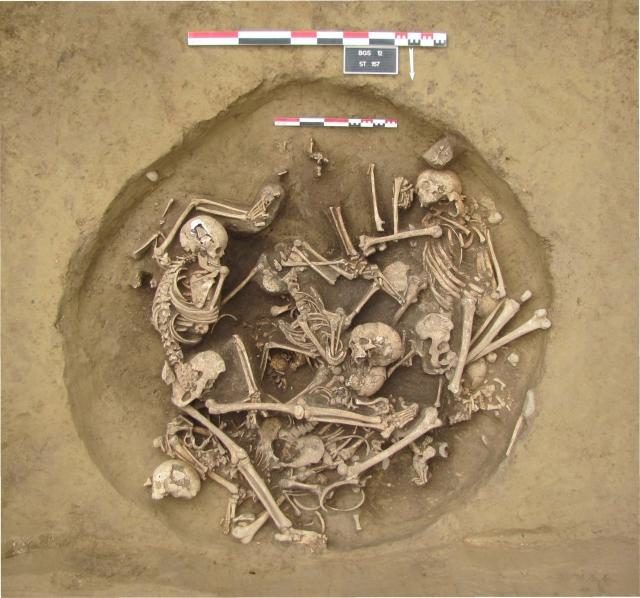In Pit 124, one of 300 on a site outside of Strasbourg, French experts from France’s National Institute for Preventive Archaeological Research (Inrap) discovered the remains of ten people, and the situation indicates a massacre had taken place.
The remains are of five adult skeletons, one adolescent, and four arms from unknown individuals who weren’t buried in the pit. Rather gruesomely, the bodies are stacked on top of the arms, which are thought to be war trophies.

The six male skeletons in the pit show signs of fractures in their legs, arms, skull, ribs, and pelvis. From the way the bodies were piled on top of each other experts believe they were killed together and dumped into the silo rather than laid out in a proper burial.
Back 6,000 years ago it was common for circular pits to be used as burial plots in the farming communities in western and central Europe. The farmers often used circular pits to store grains, and it is thought these were repurposed for burial plots for those who were not worthy of a decent burial. The experts believe that the individuals were brutally executed and received many violent blows, most probably from a stone ax.

The graves date from the Neolithic era, which has always been thought of as a time of peaceful societies. As more evidence is being uncovered by specialists, it is beginning to look like in this era people had their fair share of war and conflict after all. The pits were found within a defensive wall, which suggests that times were unsettled for the people who lived there, Mail Online reported.
The severed arms are most likely war trophies –in 2012, at Pit 157 in Bergheim, similar severed arms were found. The new evidence in Pit 124 in Achenheim is confirming a hypothesis suggested in 2012 that the Neolithic wars were very violent and that sometimes over-killing took place. This would explain the multiple fractures and the extra arms in the pit. In a paper published about the Bergheim pit, the author writes of such a violent attack having taken place in one settlement that it wiped out an entire family.

The Bergheim pit contained seven human skeletons and a piece of a child’s skull, all stacked on top of seven amputated arms.
In Europe, there is more and more evidence being found of violence in Neolithic times – mostly in Germany, but also, as the Strasbourg find shows, in France.
